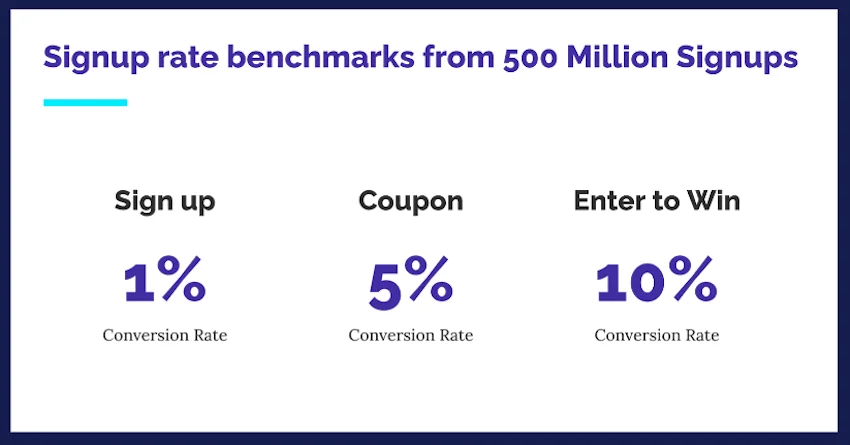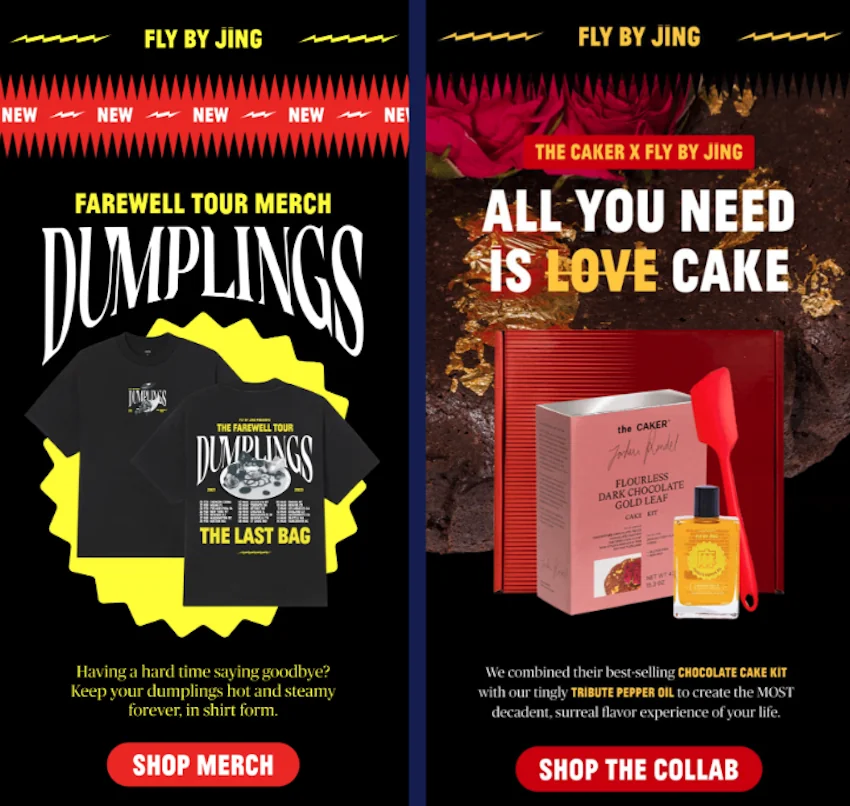Expert Tips: email strategies that guarantee sales success
Chase Diamond is an email expert and partner at Structured, an eCommerce marketing agency. He runs their email team, which has sent over a billion emails, creating $100,000,000 in email-attributable revenue. Here are some highlights from his talk about email marketing success.
Email Categories
Chase opens the workshop with some email marketing terminology. An email campaign means a one-time send to a group of contacts. For example, a holiday blast, a promotional send, or a product launch.
Flows refers to email automation, which is triggered every time a person takes a certain action, such as adding something to their cart without going to checkout or making a purchase. If they are already on your email list, the fact they abandoned their cart will stand out. If they enter their email in a popup or form, this triggers a series of welcome emails for non-buyers. A transactional email is a flow, meaning an automated email, while being meant for activities after people purchase, such as order confirmation or shipping confirmation.
Email Collection
To start marketing to your audience via email, you will need their addresses. With email collection, there are 3 primary processes in eCommerce:
1) Signup: This is as simple as writing, “Enter your email to join our email list. You’ll be the first to know about x y z.” It is important to show your audience the clear benefits of providing their email address.
2) Coupons: These come in the form of offering a discount, which is the most popular email collection strategy and converts about 5 of every 100 people that see it to sign up.
3) Enter-to-win: This means offering your audience the chance to win something by signing up. It is important to offer a relevant product from your store. If you offer something like an iPhone you might end up with a lot of signups from people who aren’t really interested in your products. Chase has found that enter-to-win offers convert around 1 in 10 people to join a newsletter.
When going with this option it is important to hold prize draws frequently. A lot of companies enthusiastically announce their enter-to-win competition but then go several months without following up. This can create frustration and cause interest among customers to decrease.

Popup Email Collection
On a desktop is it best to have popups trigger as people are about to leave a website, which can be arranged with services like Klavyo. One way to set this up is with a scroll delay, which activates the popup when a visitor has scrolled past 75% of the webpage.
Next is a flyout, which is smaller than a popup, and tends to stick to a corner of the screen. These are used less for email acquisition, and more for acquiring additional customer data points. For example, asking if their most recent purchase was for themselves or for someone else, or what their gender is.
Post-Purchase
While it may seem that the lead-up to a visitor making a purchase should take most of your focus, it is important not to forget the window following it. Chase finds that this is a great moment to work on your relationship with customers and build a stronger bond. This can come in the form of a ‘thank you for your purchase’ email. It can be plain text, which is often a welcome change if most of your other emails feature a lot of designs. Sending this kind of email, coming from a community manager or customer-facing lead, can be a great way to mix it up.
Letting customers know you appreciate their business and what it means to you can help establish a deeper connection. A post-purchase email is also a great opportunity to tell buyers about your product. Perhaps it requires some form of know-how or training to use properly, so you’ll want to explain how to use and maintain it correctly.
Chase had a customer called Calming Blankets that sells weighted blankets. He found that before implementing post-purchase emails, their customer support was bogged down with the same few questions: such as, “How do I use it?” or “How do I know if it’s working?” Chase wanted to get ahead of this, so his team implemented new messaging. After completing their purchase, customers were sent emails with a message along the following lines: “Thank you for your purchase! While you wait for your order, we wanted to share ways to use this blanket and get the most value out of it.” It also included information on how to sleep with the blanket and other tips.
Implementing these emails and teaching buyers how to use the product while they were waiting reduced customer support queries by around 50%. Being that they numbered in the thousands, this decrease was quite drastic.
The next step is to send out a request that buyers leave a review of the product. However, it is important to only send these out after the shipment has arrived. Chase has found that far too many brands ask customers who are still waiting for the product whether they liked it. And finally, it can be worth sending a personal email showing your appreciation for their purchase, while inviting them to follow you on social media. This is a great way to reduce buyer’s remorse, build community, provide educational materials, and ask for reviews.
Cross-Sales and Upsells
In his work, Chase has found that you are 4-5 times likelier to sell to someone that has bought from you already than to someone new. So after customers make a purchase, he recommends emailing them with something like: “While you wait for your wallet, here are some other products we think you might like.” The idea is to keep them engaged with your brand and capitalize on their interest.
Audience Question: Regarding emails with a lot of images, how do you make sure they are not showing up in spam folders?
To Chase, the notion that just because your emails contain images, they will be filtered to spam, is a myth. While it is a factor, it’s not the only component. Other aspects have a bigger impact, such as whether people are engaging with your emails, forwarding, clicking, opening, marking as spam, or your email bounce rate. So, while images do affect an email’s likelihood of being categorized as spam, there are other factors that are equally as important.
If you do use images in your emails, ideally don’t use one single graphic for the entire email. Aim for a mixture of 40-60% text, with the rest being lightweight images that don’t take up too much storage space. You should compress all of your images with a free tool like Squoosh. This will allow you to maintain picture quality, while drastically increasing image loading time. Always pay attention to image and file sizes.
Audience Question: Do you have a suggestion for a platform for designing emails, and then importing them to a platform like Klaviyo?
Most people probably use something like Figma, which is pretty popular. Others use tools like Photoshop, Illustrator, Canva, etc. It all depends on preference. Chase’s team is happy with Figma.
Campaigns
People often ask Chase what makes a brand good or different from competitors. He thinks that being authentically yourself is important. This means genuinely having a stance, which doesn’t need to be polarizing or controversial. Chase feels that having a stance, leaning into who you are, and having that shine through the brand can be a good thing. This is how you build a tribe and a community of customers that are loyal. Many people feel a stronger connection to brands that stand for something they identify with. If holding a stance like this isn’t your cup of tea that’s also fine. There are other ways to achieve these same results through other means.
Fly by Jing is a good example of successful stance-driven marketing. Its branding is fun, different, and edgy, even somewhat dark. This gives them a strong appeal and helps them stand out from the crowd. The company generally did very well with its marketing, seeing great success when sending out product launch emails. Doing this is a smart way to get people to buy from you repeatedly or for the first time.
On one occasion Fly by Jing discontinued a product and started selling a ‘farewell tour’ t-shirt to commemorate it. It used wit and humor to create hype around its products, leading to a high CTR (click-through rate) and conversion rate. Hyping a product launch one or two days in advance with a plain text email is also a good strategy. One simple secret for this brand’s success is that they created beautifully designed emails that people wanted to see, they were highly engaging. This ability to turn heads was leveraged to introduce people to new products.

Another great way to keep customers interested is with an end-of-year recap of best-selling products. This can be done at the end of the month, quarter, or year. It simply highlights popular products that others might also want to buy. These emails have baked-in social proof, which helps consumers trust the products. Another way to leverage the popularity of certain products is to give buyers the ability to opt-in to email notifications when a product they like is back in stock.
Audience Question: What can brands that never discount do to encourage people to stay on their email list?
Higher-end brands that don’t do discounts tend to lead with exclusivity. You need to leverage other psychological elements, such as limited launches. The goal is to create the allure that people feel they need to be engaged through email or SMS in order not to miss out. This requires engaging your audience and building a strong community.